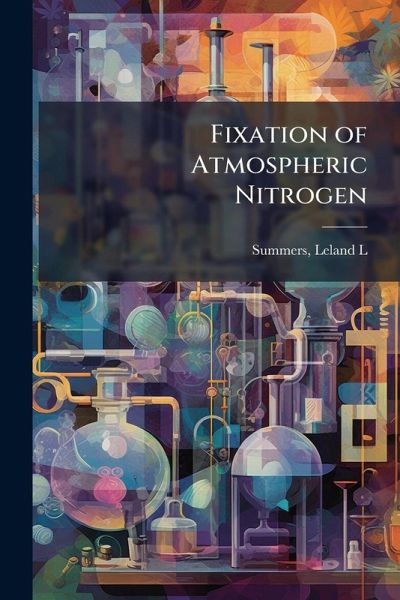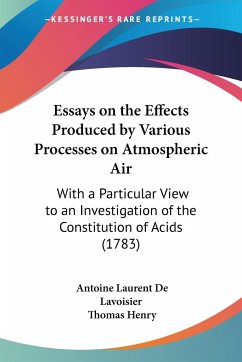
Fixation of Atmospheric Nitrogen
Versandkostenfrei!
Versandfertig in über 4 Wochen
14,99 €
inkl. MwSt.
Weitere Ausgaben:

PAYBACK Punkte
7 °P sammeln!
Fixation of Atmospheric Nitrogen, by Leland L. Summers, delves into the scientific and industrial processes of converting atmospheric nitrogen into usable compounds. Published in 1915, this work provides a historical snapshot of the early 20th-century understanding of nitrogen fixation, a critical process for agriculture and industry. The book likely explores various methods of nitrogen fixation, including both natural and artificial processes. It discusses the chemical reactions involved, the equipment and techniques used, and the economic considerations of producing nitrogen compounds on a l...
Fixation of Atmospheric Nitrogen, by Leland L. Summers, delves into the scientific and industrial processes of converting atmospheric nitrogen into usable compounds. Published in 1915, this work provides a historical snapshot of the early 20th-century understanding of nitrogen fixation, a critical process for agriculture and industry. The book likely explores various methods of nitrogen fixation, including both natural and artificial processes. It discusses the chemical reactions involved, the equipment and techniques used, and the economic considerations of producing nitrogen compounds on a large scale. "Fixation of Atmospheric Nitrogen" is valuable for those interested in the history of chemistry, agricultural science, and the development of industrial processes related to fertilizer production. It offers insights into the scientific advancements that have shaped modern agricultural practices and chemical engineering. This work has been selected by scholars as being culturally important, and is part of the knowledge base of civilization as we know it. This work was reproduced from the original artifact, and remains as true to the original work as possible. Therefore, you will see the original copyright references, library stamps (as most of these works have been housed in our most important libraries around the world), and other notations in the work. This work is in the public domain in the United States of America, and possibly other nations. Within the United States, you may freely copy and distribute this work, as no entity (individual or corporate) has a copyright on the body of the work. As a reproduction of a historical artifact, this work may contain missing or blurred pages, poor pictures, errant marks, etc. Scholars believe, and we concur, that this work is important enough to be preserved, reproduced, and made generally available to the public. We appreciate your support of the preservation process, and thank you for being an important part of keeping this knowledge alive and relevant.












![Elementary Experimental Chemistry [microform] Cover Elementary Experimental Chemistry [microform]](https://bilder.buecher.de/produkte/66/66154/66154924n.jpg)